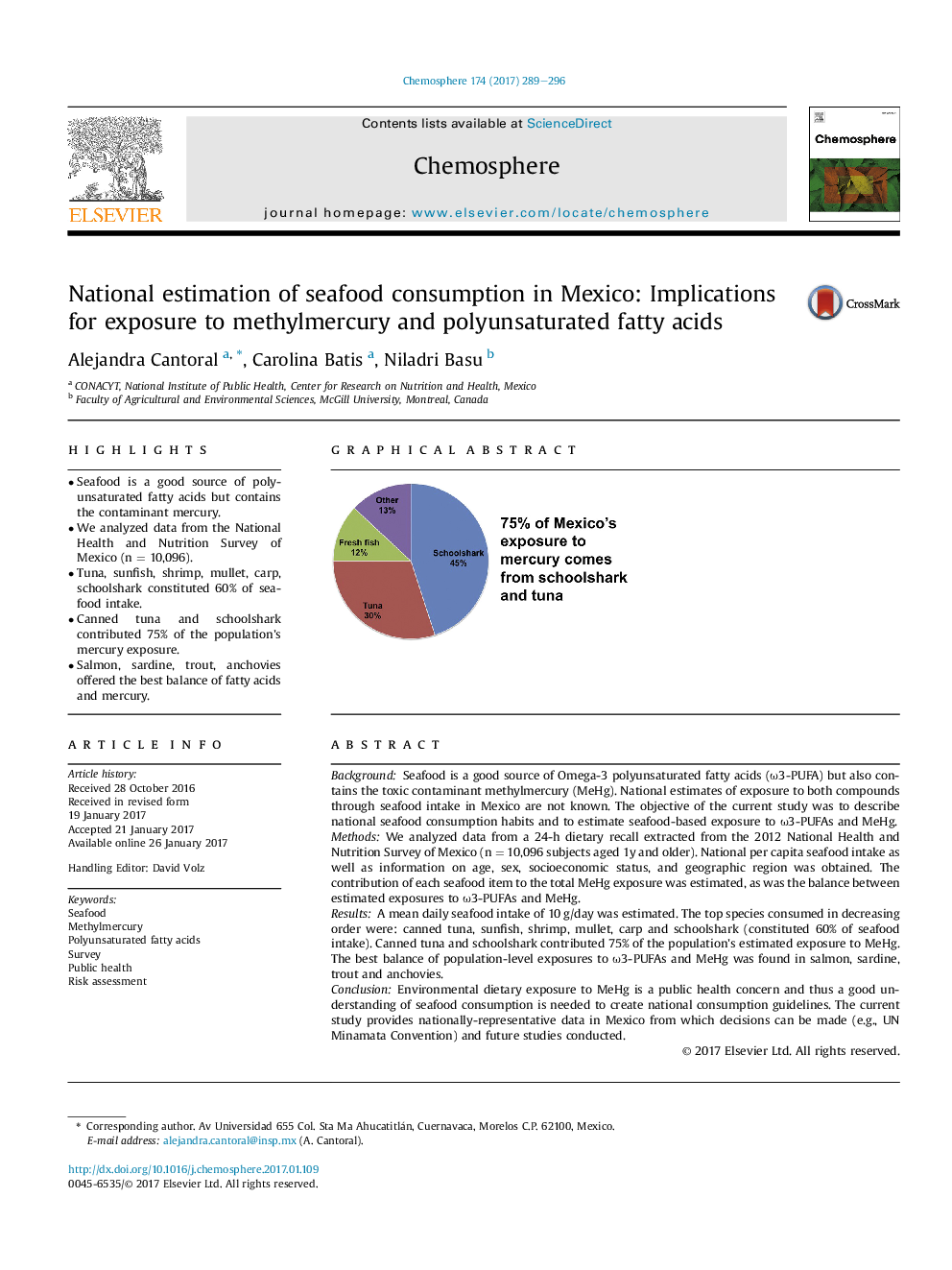| Article ID | Journal | Published Year | Pages | File Type |
|---|---|---|---|---|
| 5747320 | Chemosphere | 2017 | 8 Pages |
â¢Seafood is a good source of polyunsaturated fatty acids but contains the contaminant mercury.â¢We analyzed data from the National Health and Nutrition Survey of Mexico (n = 10,096).â¢Tuna, sunfish, shrimp, mullet, carp, schoolshark constituted 60% of seafood intake.â¢Canned tuna and schoolshark contributed 75% of the population's mercury exposure.â¢Salmon, sardine, trout, anchovies offered the best balance of fatty acids and mercury.
BackgroundSeafood is a good source of Omega-3 polyunsaturated fatty acids (Ï3-PUFA) but also contains the toxic contaminant methylmercury (MeHg). National estimates of exposure to both compounds through seafood intake in Mexico are not known. The objective of the current study was to describe national seafood consumption habits and to estimate seafood-based exposure to Ï3-PUFAs and MeHg.MethodsWe analyzed data from a 24-h dietary recall extracted from the 2012 National Health and Nutrition Survey of Mexico (n = 10,096 subjects aged 1y and older). National per capita seafood intake as well as information on age, sex, socioeconomic status, and geographic region was obtained. The contribution of each seafood item to the total MeHg exposure was estimated, as was the balance between estimated exposures to Ï3-PUFAs and MeHg.ResultsA mean daily seafood intake of 10 g/day was estimated. The top species consumed in decreasing order were: canned tuna, sunfish, shrimp, mullet, carp and schoolshark (constituted 60% of seafood intake). Canned tuna and schoolshark contributed 75% of the population's estimated exposure to MeHg. The best balance of population-level exposures to Ï3-PUFAs and MeHg was found in salmon, sardine, trout and anchovies.ConclusionEnvironmental dietary exposure to MeHg is a public health concern and thus a good understanding of seafood consumption is needed to create national consumption guidelines. The current study provides nationally-representative data in Mexico from which decisions can be made (e.g., UN Minamata Convention) and future studies conducted.
Graphical abstractDownload high-res image (173KB)Download full-size image
